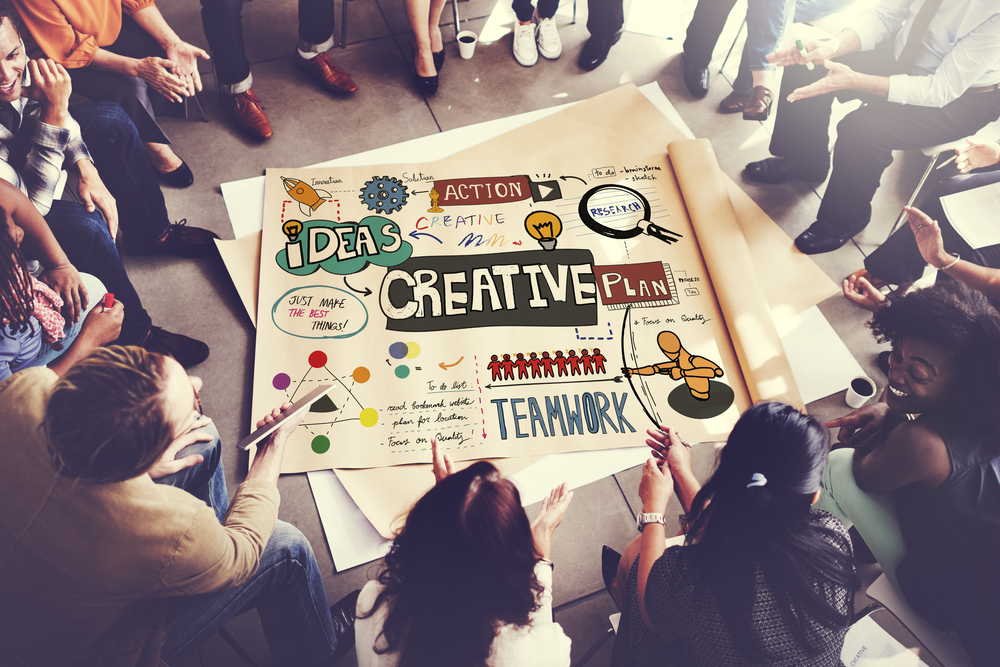There is much to be learnt from the mental health crisis that is currently engulfing the creative sector about how to treat – or, rather in many cases, how not to treat – one of your most valuable assets: your creative talent.
All businesses today need to think creatively about the challenges facing them, with ‘creativity’ identified as key to our future economies by the World Economic Forum. However, looking specifically at the creative sector gives us a good benchmark to gauge how creative professionals are faring in these turbulent times.
Severe stress, anxiety or burnout pervasive last year
The answer is bleak.
One recent survey shows that half of marcoms professionals (covering PR, marketing and comms) suffered severe stress, anxiety or burnout last year, according to researchers Coleman Parkes. The National Advertising Benevolent Society (NABS), the advertising industry’s wellbeing charity, found a similar story in its survey, which it ran in partnership with MIND:
64% said they have considered leaving the industry because of their wellbeing and 36% said their mental health over the last year has been either poor, or very poor. This was also reflected in mental health related calls to the NABS helpline, which have shot up 128% year on year.
Stress, addiction, burnout and mental ill-health are standard
So what is happening to this formerly cool and hip industry, which used to have no trouble luring the crème de la crème of creative talent into its hallowed and shiny glass corridors?
“Ours is an industry that seems to accept overwork, stress, addiction, burnout and mental ill-health almost as standard parts of the job,” says Mary Paslawski, client services director, marketing, at Harvard Comms, one of the PR and marketing agencies that commissioned the Coleman Parkes research.
“But when the pandemic hit, a window opened. Suddenly everyone had a shocking and hard reality to deal with, and people who had never experienced poor mental health before, now understood. In turn, it made it more acceptable to talk about how you’re feeling mentally, which is the sliver of silver lining I’ve taken away from it.”
The pandemic shone a light on mental health
The reason that mental health hadn’t been on the agenda pre-pandemic, says Paslawski, is that there was a pervasive ‘don’t ask, don’t tell’ culture through out the industry. Chloe Davies, head of social impact at creative agency Lucky Generals, echoes this saying “before now the industry had an awareness, but for a long time pretended it wasn’t really happening when great work continued to be churned out”.
As she explains, this pretence was viable when, in the past, no sooner had you lost one employee another candidate would have their feet under the desk quicker than you could say ‘Beans meanz Heinz’.
“The pool of talent outweighed the burnout,” she says. “The difference now, post pandemic, is that a sense of belonging and wanting to be valued and authentic, means so much more to people in the wake of Covid-19. You could call it the ‘quiet resignation’ but, whatever you call it, people are moving with their feet now. Being valued is their highest priority. That’s why the industry is losing good people and is also not able to recruit the same calibre of employee as in the past.”
Pandora’s box of mental wellbeing has been opened
All the interviewees I spoke to for this article agreed that there is no going back to how it was – however much the mad men in their pin striped suits would like to return to their halcyon days of long boozy lunches and deals over late night drinks in the pub. Those days are gone.
As Edward Coram James, chief executive of marketing agency Go Up, puts it “the Pandora’s box of mental wellbeing was very much opened during Covid-19”. His company, like other progressive ones, recognises that it is now at the beginning of “a long, long, journey” to work out the wellbeing “sweet spot” which marries what is good for the employee with what is good for the company.
Employee autonomy is key
For him, getting the balance of autonomy right is going to be fundamental in future. Indeed, this is backed up by scientific papers on stress and creativity. One study, for instance, showed that “uncontrollable stress” leads to worse performance on creative tasks (Dickerson and Kemeny 2004), which would suggest that a sense of control and autonomy is an important ingredient for good performance.
“There’s an expectation from staff for autonomy and to have their employers recognise they are human beings and that mental health is a key part of being a human being,” says Coram James. “People want to take control of their lives because for a very long time, probably centuries, humans have broadly felt they’re not in control of their lives because their employer was. And I think that’s totally fair enough. Why would you want to work somewhere where they force you to come to the office five days a week if you don’t want to? Or work somewhere that doesn’t have a human touch?”
Total systemic change is needed
And let’s be clear here. By ‘human touch’ we are not talking about offering the occasional wellbeing webinar or free yoga and personal training. The campaigners for change in the creative industries are pushing for an overhaul of the current modus operandi, for total systemic change.
Harvard Comms and the other agencies that commissioned the Coleman Parkes research, Innovate Comms and CCgroup, have set up a mental health network called ‘State of Us’ to lead the charge on change. This network aims to destigmatise mental health, start conversations and bridge the gap between client brands and their agency suppliers to nurture and protect employee wellbeing.
“If any sector should be able to face up to and alter how we approach an issue like mental health at work, it’s us. Comms and marketing folk are society’s storytellers after all,” says Paslawski.
Need to understand the creative temperament
Whether the story ends up being a fairy tale with a happy ending, or a fable containing a moral lesson, remains to be seen. What’s clear is that those employers who really understand the creative temperament will win out.
Renowned psychiatrist and thought leader, Gabor Maté, draws parallels between the sensitive temperament and the creative one in his latest book ‘The Myth of Normal: trauma, illness & healing in a toxic culture’.
Sensitivity and creativity
He asserts that “the most sensitive of our kind have made some of the most lasting cultural contributions” and that these people are often “exquisitely sensitive to their environment, making them especially vulnerable under conditions of adversity but unusually vital, creative and successful within nurturing environments”. Sensitive people, he says, have the potential to be more “insightful, inventive, artistic and empathic if their sensitivity is not crushed by maltreatment or disdain”.
Employers for which creativity is fundamental to their profitability – which is, arguably, most in today’s conditions – must get their heads around this. And quick because, as PR director and mental health campaigner Amelia-Eve Warden, says “Gen Z, the most creative generation yet, is coming…. They’re coming on their unicorns and they’re ready to take the jobs”.
You might also like:
Reclaiming Creativity & Focus: 4 Quick Steps to Get Into Flow State on Command












